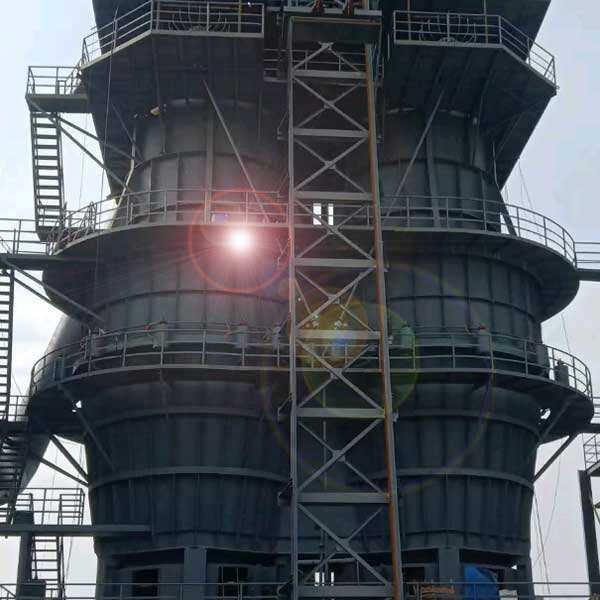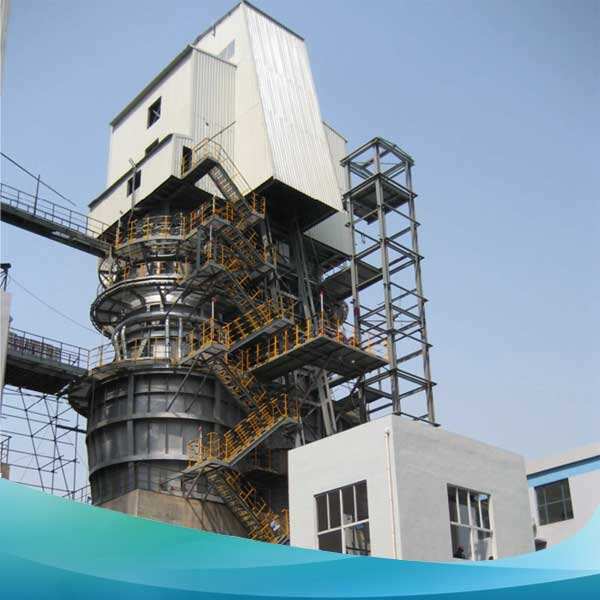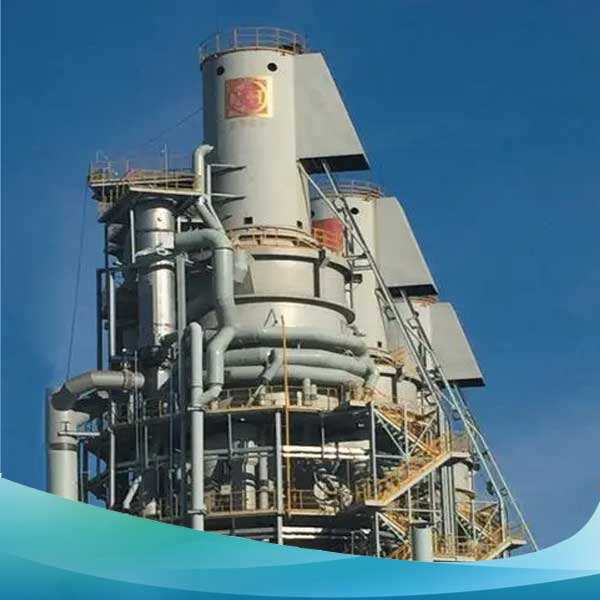Un Four Rotatif : Procédé de Fabrication du Ciment. Il s'agira d'un aperçu pratique du processus impliqué dans la fabrication du ciment et de l'utilisation des fours rotatifs pour le produire. Le four rotatif est un grand équipement mécanique de toute la ligne de production et influence profondément divers secteurs industriels. Imaginez des fours massifs, ultra-chauds, capables d'accomplir une multitude de tâches incroyablement utiles. En tournant autour de leur axe, ces machines cylindriques utilisent leurs mouvements pour transformer des matériaux de base en composants complexes. Les fours rotatifs industriels peuvent effectuer une multitude de tâches, allant du séchage des minéraux au traitement de déchets massifs, ce qui les rend extrêmement polyvalents et utiles. L'une des distinctions les plus importantes entre les fours rotatifs modernes et les modèles anciens est qu'ils peuvent apporter des ajustements très subtils à leur vitesse de rotation. Cela signifie que grâce aux variateurs de vitesse, votre four combine le transfert de chaleur et nécessite la bonne quantité de temps de traitement pour que vos matériaux terminent leur traitement thermique. De plus, les systèmes de refroidissement de la coque peuvent encore atténuer les contraintes thermiques, permettant ainsi une durée de vie plus longue de votre équipement, et des systèmes de combustion ultra-éfficients avec double injection peuvent réduire les émissions. Cela permet également des optimisations supplémentaires de l'efficacité opérationnelle via des ajustements dynamiques bien plus précis basés sur des systèmes de contrôle avancés avec surveillance en temps réel et analyse de données.
À l'heure actuelle, les fours rotatifs sont devenus l'un des outils essentiels contribuant à des pratiques industrielles et de fabrication durables. Des dispositifs modernes de contrôle de la pollution, tels que des lessiveurs et des filtres, sont utilisés dans ces fours pour minimiser les rejets nocifs. De plus, les fours rotatifs peuvent être alimentés en utilisant des carburants alternatifs comme le combustible dérivé des déchets, réduisant ainsi la dépendance aux carburants fossiles et offrant une méthode respectueuse de l'environnement pour l'élimination des déchets. Le calcination de chaux recyclage de ce qui pourrait être considéré comme de la chaleur perdue, réalisé en réduisant les empreintes carbone (probablement l'énergie totale), devient plus efficace de manière proactive, permettant à certains systèmes de récupérer au moins partiellement leur fonctionnalité
Les fours rotatifs sont utilisés par des dizaines d'industries en raison de leur polyvalence. Notamment, ils sont utilisés pour l'amélioration des artères allant jusqu'à 1 000 tonnes/heure et plus, ainsi que pour les lits fluidisés destinés aux zones de récupération de pierres. Dans la gestion des déchets, des incinérateurs sont utilisés pour le traitement et l'élimination des déchets dangereux, médicaux et solides municipaux... Les fours rotatifs sont également utilisés pour réaliser des processus tels que la préconditionnement des aliments pour animaux, le séchage du charbon actif et l'oxydation des boues d'épuration ; ils servent aussi à fondre divers composants chimiques dans le traitement des métaux. La flexibilité des fours rotatifs est ce qui justifie leur utilisation dans tant d'applications afin d'atteindre ces processus souhaités.
Le contrôle de la température du matériau peut être un aspect clé de l'exploitation d'un four rotatif, comme vous le savez probablement en gérant les contrôles de votre séchoir. La température influence à la fois le taux de réaction chimique (traitement thermique) et les changements des propriétés physiques (séchage). Dans les processus de ciment / calcination et autres, il est essentiel de maintenir les températures afin que les produits soient de meilleure qualité. Pensalab dispose de nouvelles technologies en matière de profilage thermique associé à une segmentation intelligente et au placement des chauffages qui offrent une distribution uniforme de la chaleur sur toute la longueur du four. Comme il contrôle l'approvisionnement en carburant, l'écoulement d'air et le chauffage de manière optimale, il n'y a pas de gaspillage d'énergie, contrairement à certains systèmes incorrects où la température pourrait descendre en dessous de 0 ou dépasser le maximum, par exemple pour l'acier inoxydable, ce qui pourrait entraîner une dégradation due aux hautes températures.
Les fours rotatifs conçus sur mesure jouent un rôle important dans le traitement adéquat des matériaux. Toutes ces solutions sont conçues en prenant en compte les propriétés du matériau alimentaire et une capacité de production appropriée. Une offre de construction modulaire pour une installation facile et une mise à niveau, ainsi qu'une spécification d'équipement correcte qui garantit des résultats durables même dans les conditions de processus les plus sévères. Disposer de la fonctionnalité que propose une forme de personnalisation vaut presque certainement la peine de payer des frais de gestion supplémentaires, car elle permet non seulement une automatisation accrue, mais réduit également les coûts de maintenance grâce à de si faibles frais de fonctionnement - un avantage indéniable pour atteindre un ROI favorable.
Donc, en fin de compte, il est démontré que les fours rotatifs sont ce qui répond à une série d'exigences de l'industrie et de la protection de l'environnement. Puisqu'ils peuvent servir dans des applications industrielles variées et pour des clients qui nécessitent un contrôle précis de la température élevée, ainsi que des fonctions de traitement des matériaux offrant un niveau intransigeant de performance, leur valeur durera longtemps dans l'ère en rapide évolution de la technologie avancée dans l'industrie. Alors que les industries évoluent vers plus de durabilité, cela maintiendra les fours rotatifs comme la technologie la plus avancée pour offrir un avenir plus vert.
Offrant de la valeur à de nombreuses méthodes d'exploitation et de conception différentes, celles-ci ont 'modernisé le cœur de tout vieux four rotatif' en termes de focalisation sur son procédé ou son produit. Les variateurs de vitesse - offrent un meilleur contrôle de la vitesse de rotation du tambour et disposent d'un ajustement fin qui maximise le temps de transfert thermique. Les systèmes de refroidissement dans l'enveloppe aident à réduire les contraintes thermiques et prolonger la durée de vie de l'équipement. Les fours plus récents possèdent également des systèmes de combustion de pointe pour une alimentation énergétique optimale et peuvent, cinq à huit fois par an, modifier leur mélange de carburant principal afin que les émissions chutent. La surveillance en direct avec analyse de données garantit qu'une attention soutenue est portée à chaque élément de l'installation, verrouillant les opérations pour une gestion précise du processus et faisant des ajustements dès que les variables changent, maintenant ainsi les conditions à leur état optimal.

Dans l'évolution de la nature du four rotatif dans la vie contemporaine, il ne s'agit pas tant d'une question de possibilités que d'un changement inévitable après que la durabilité ait donné lieu à différentes versions de ces technologies. L'émission de particules et de gaz nocifs est considérablement réduite en équipant les systèmes de solutions modernes fabrication de chaux de contrôle de la pollution comme des lessiveurs et des filtres. De plus, une autre solution récurrente pour diminuer la dépendance aux carburants fossiles réside dans sa capacité à fonctionner avec des carburants alternatifs - même ceux qui utilisent les déchets comme matière première - ce qui en fait un moyen approprié pour gérer les ordures. Une utilisation supplémentaire de l'énergie peut être économisée grâce aux systèmes de récupération de chaleur qui capturent la chaleur perdue d'un système et la redirigent vers le processus, réduisant ainsi l'empreinte carbone globale tout en faisant des économies d'énergie.

Comme mentionné précédemment, le meilleur aspect des fours rotatifs est qu'ils peuvent être utilisés dans plusieurs industries et applications. Ils constituent une partie intégrante du processus minier à petite ou grande échelle sur le marché de l'exploitation minière pour les étapes essentielles de séparation sur site. Dans le contexte de la gestion des déchets, ils sont nécessaires pour traiter en toute sécurité les déchets dangereux (incinération/combustion), médicaux (autoclave ou micro-ondes) et les déchets solides municipaux. Dans l'industrie agroalimentaire, Four rotatif à chaux ils peuvent être utilisés pour traiter des produits tels que les aliments pour animaux ou les engrais ; tandis que le secteur chimique les utilise pour réaliser l'une ou l'autre des nombreuses réactions. La variété de fonctions que le four rotatif remplit en fait un composant essentiel dans de nombreuses applications de traitement industriel.

Le contrôle du champ de température dans le four rotatif peut répondre pleinement à ces deux exigences, et il est directement lié aux changements chimiques qui influencent ainsi les caractéristiques physiques. Le contrôle des variables de processus est également crucial car des propriétés basées sur la température sont obtenues lors de la production de la plupart des produits tels que le ciment, le clinker et les matériaux calcinés. Un flux de chaleur cohérent est obtenu d'une extrémité du four à l'autre avec une zonage spécifique et un positionnement des éléments de chauffage en utilisant un profil thermique détaillé grâce à des technologies de pointe. Sur la bande transporteuse, il y a un contrôle automatique de la température avec une faible consommation d'énergie, car un surchauffage peut se produire pendant le traitement, avec une proportion correcte de combustible ou d'air ajustée en temps réel (par un ventilateur contrôlé par retour), ainsi qu'un chauffage direct, éventuellement indirect, pour éviter la dégradation.
plus de 20 ans, sont dédiés au développement, à la recherche sur l'installation du four rotatif pour chaux. Il est entièrement automatique avec un investissement de coûts minimal. Le four à chaux a une durée de vie prolongée, nous sommes fiables grâce à un excellent service et un moulin à chaux de haute qualité.
L'entreprise s'est principalement chargée de l'ingénierie des programmes, de la conception, de l'installation et de la mise en service des équipements pour les fours et les hauts-fourneaux, atteignant une production écologique et énergétiquement efficace dans les fours à chaux verticaux. L'entreprise a construit des fours à chaux activés de différentes tailles, y compris 150m3, 170m3, 200m3, 250m3, 350m3, 500m3, etc. Les fours ont été mis en service avec succès et ont produit un effet spectaculaire ! En utilisant la dernière technologie du four à chaux vertical au coke, le four à chaux vertical au gaz a été comparé au four rotatif, et des contrats de conception ont été signés avec de nombreuses entreprises.
Depuis longtemps, AGICO dispose d'une équipe technique professionnelle, d'une technologie de production mature et d'une riche expérience de production, formant un ensemble complet de systèmes de gestion de la technologie de production des fours à chaux verticaux. Cette technologie rend les fours à chaux économiques en énergie et respectueux de l'environnement, perfectionnant ainsi la technologie du four rotatif. Cette technologie présente un coût d'investissement faible, une qualité élevée d'automatisation, une qualité supérieure des produits, une faible consommation d'énergie et une durée de vie prolongée du four. Elle est largement utilisée dans les industries métallurgiques, chimiques non ferreuses, les métaux, les matériaux de construction ainsi que dans d'autres secteurs tels que le traitement en profondeur, etc.
AGICO possède une équipe technique hautement spécialisée dans les projets clés en main (EPC), qui incluent la fabrication, la conception, l'installation, le débogage, l'entretien et d'autres services. Nous offrons un système complet de services avant-vente, après-vente et après-vente, fournissant un soutien technique nécessaire pour répondre aux exigences des clients.